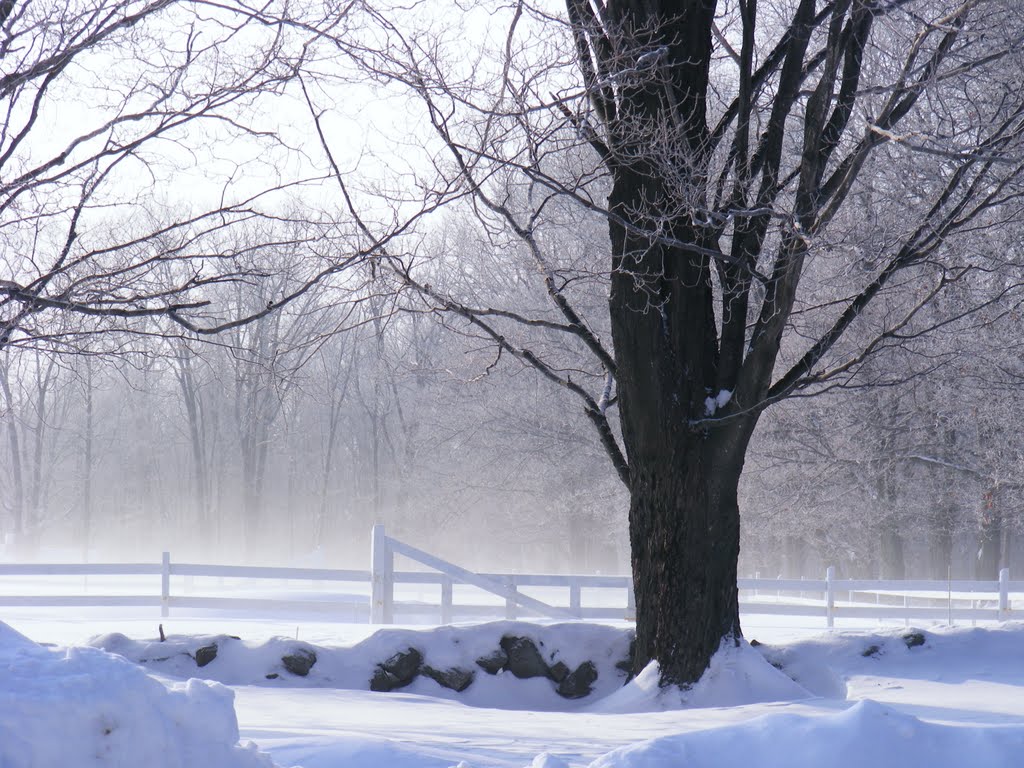
Bring on the Sublimation!
So, what is sublimation?
Sublimation is: “the transition of a substance from the solid phase directly to the vapor phase, or vice versa, without passing through an intermediate liquid phase.”
Well, what I want to mention, is that at this time of year, a lot of the snow starts to disappear via sublimation. That means the snow can evaporate, even though the temperatures are below the freezing point! Yes, a lot of the snow we have now will not “melt” away, but will go away because of the process of sublimation. It goes directly from a solid to a gas, without turning into a liquid. And with more sunshine, and some wind to push those molecules around, maybe, just maybe, the snowbanks will start to recede so that we can see the traffic coming down the road before we pull out!
From the Weather Guys:
The transition of water from the ice phase (or snow) to the gas phase (or water vapor) is called sublimation. Sublimation is a common way for snow to disappear in Wisconsin winters.
On warmer days, when temperatures are above freezing, we can see the melting process as snow leaves water behind on surfaces, which then evaporates or gets absorbed by the ground. We do not see the sublimation process because the snow goes directly into water vapor without first melting into liquid water. However, we do notice that the snow amount is decreasing, so snow sometimes seems to disappear on cold winter days.
The rate of sublimation is a function of the weather conditions. It takes a lot of energy to turn ice into a gas called water vapor: about 7 times the amount of energy needed to boil that water. The energy needed to sublimate the snow off your patio comes primarily from the sun. So, sunny weather is the best weather for sublimating snow. Windy days are also good, as the wind helps to remove the water molecules once they leave the snow and enter into the atmosphere. A low humidity also helps to increase the rate of snow loss. So, the amount of snow that sublimates back into the air depends on the typical winter weather for a given location.
And the rate of sublimation increases with a higher angle to the sun. So now that we are moving towards Spring the sun appears higher in the sky, and the more direct rays of the sun hitting the surface of the earth brings more solar energy and therefore more sublimation.
Jeff Haby, a meteorologist tells us,
“The relationship between sun angle and solar intensity is such that as the sun angle increases above the horizon the solar intensity at the surface increases at an increasing rate. Therefore higher sun angles are much better at surface snow sublimation than lower sun angles. Sublimation will occur even at the low sun angles but the amount of sublimation is very weak. At very low sun angles the reflection of solar energy off the snow surface is a very high percentage, the sun has to travel through a longer fetch of the atmosphere thus weakening the solar intensity, the sinusoidal relationship between sun angle and solar intensity results in weak solar intensity at a low sun angle, and shadow casting on the earth’s surface reduces much of the sunlight that strikes the surface. The higher the sun angle gets the weaker the four effects mentioned previously are. These effects weaken at a more rapid rate for each degree higher the sun angle becomes. Since sun angle is a minimum at the start of winter and much higher in late winter, the sublimation power of the sun on surface snow will be much higher in late winter as compared to early winter on sunny days. “
So here’s to bright sunny days, with the sun high in the sky. (And a little breeze wouldn’t hurt too!) With a lot of sublimation going on, we can look forward to Spring and our first ATV ride of the 2019 season (see the 2019 tentative schedule).
Time to get rid of some of this snow. Without sublimation, my car is starting to look like a submarine in a snow bank!
Take care,

